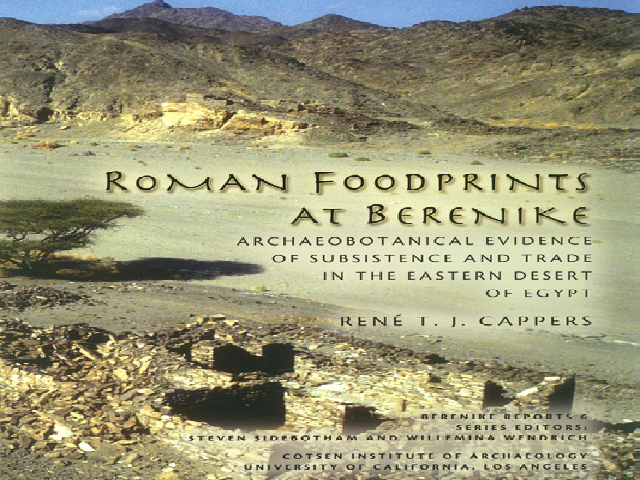Cappers, R.T.J. 2006. Roman foodprints at Berenike. Archaeobotanical evidence of subsistence and trade in the Eastern Desert of Egypt. – Los Angeles, Cotsen Institute of Archaeology, University of California, Los Angeles (Berenike Reports 6, Monograph 55)
Abstract
Berenike is situated on the Egyptian Red Sea Coast just south of Ras Banas which, if a line is drawn westwards across the Red Sea Hills, would hit upon Aswan just above the First Cataract of the River Nile. Even in modern times the site of Berenike is very difficult to get to as experienced by this author. It involves a long overnight journey on an Egyptian bus, which is most likely to break down at anytime and if it doesn’t you can hardly get any sleep due to the average Egyptian coach traveller’s (and the driver for that matter) predilection for loud and very violent videos. So, bleary-eyed you are dropped off at some makeshift tea hut alongside the road wondering what made you want to come here in the first place. After a bumpy ride across the coastal plain a sea of white military style tents greets you. This is your home for your length of stay. The wind is constantly blowing and the flies greet you like old friends, never wanting to let you go. This is now, but imagine what the site of Berenike must have been like at the time of its’ occupation during the Ptolemaic and Roman times (it was founded around 275 BC and was abandoned by the Romans at the beginning of the 7th century AD just before the Arab invasion of Egypt) when it operated as one of the major import and export ports for the Roman empire. Spices, and other treasured goods such as cotton textiles being imported from further down the African coast south of the Sahara, Arabia and India for the wealthy of the Roman Empire, and wheat and other products from the fertile Nile Valley being exported in exchange. Read more...
Downloads




